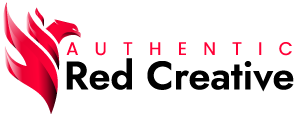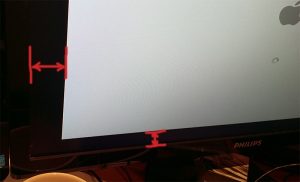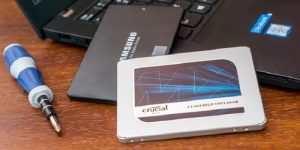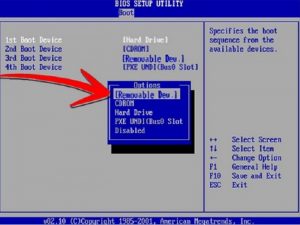Types of computer security– Any small, medium or large company must take into account that the safeguarding of their data depends not only on compliance with the Organic Law on Data Protection. but also on their prestige.
Every day there are millions of attacks directed at different computer systems. And sometimes appropriate measures are not taken. Such as having security backup until the problem is corrected.
It is appropriate to adopt types computer security measures of the following types:
Software Security

Software vulnerabilities trigger the practice in which computer intruders enter systems. And carry out their malicious practices. This problem does not stop growing. Because although security and prevention measures are continually adopted, software development is booming.
Hardware Security
Consists of the protection of the equipment before any eventuality that could damage them. Keep in mind that here they can be included from firewalls, through firewalls to proxy servers. And of course: the not-so-known HSM security modules that provide cryptographic keys for functions such as encryption or decryption.
Network Security

These are the activities aimed at protecting the network itself, providing reliability. And preventing the propagation of attacks on a network. Among the most prominent are: viruses, worms, annoying spyware, D DOS attacks (or denial of service), among others.
At this point, it is worth remembering that there is no magic solution to combat these aspects. In addition to the adoption of different security measures. We must remember that zero security does not exist. So it is advisable to have a backup that allows access at all times to the data before any type of incident.
And of course: be as up-to-date as possible in terms of attack prevention, both at the software, hardware and network level.
Among the main components of network security, we highlight: antivirus and antispyware, firewalls, virtual private networks (VPN) and IPS systems.
In short, these are the types of computer security that exist, and despite carrying out frequently measures that try to ensure attacks at different scales. The truth is that they can be compromised. And the smartest option that will save time and give peace of mind. Without a doubt, that all the information is safe.
Types computer security and the salary bubble
How are the rewards in the types of computer security ?. A junior technician starts charging around 30,000 dollars per year, approximately. While those who already have some experience can reach an additional 15,000 dollars.
In the different points of the world geography, although mostly in the most developed nations. The technology is immersed in a serious dilemma with no easy solution. There is not enough trained personnel to cover the demands made by small, medium and large companies of the sector. That is, for the so-called and publicized digital transformation. There is no staff that can cover these positions. This is clear from a recent report issued by Cisco. And it seems that, right now there are approximately one million unfilled vacancies in technology positions in Europe; in Spain, the deficit is around 85,000 people.
This difference between supply and demand, has led to a bubble in different sectors, such as security, analytics. And even big data. It is true that day after day there are countless threats and vulnerabilities, as well as a wide range of solutions to combat them. So it is practically impossible to find candidates to cover this series of vacancies.
In the study, it is also evident that during the last five years, a very important number of multinationals have begun to relocate services. So the process of finding profiles triggers a rise in the salary of technicians.
On the other hand, according to the established in a report of Experis IT of the past year 2019, the wage bubble that is crossing the sector is confirmed. In a country with an average salary of around 22,000 dollars per year. There are others that pay up to almost 44,000 dollars gross per year. Among the best paid in the first place are the business intelligence technicians. Then the SAP consultants. And the third position is held by security experts.
A junior technician usually begins to receive a remuneration of around 30,000 gross dollars per year. And after a five year experience get to get the double amount.
SMEs are interested in specialists in denial of service attacks and those problems that have to do with the theft of information. Also in profiles as security auditors and experts in vulnerability resolution.
Different types of hardware
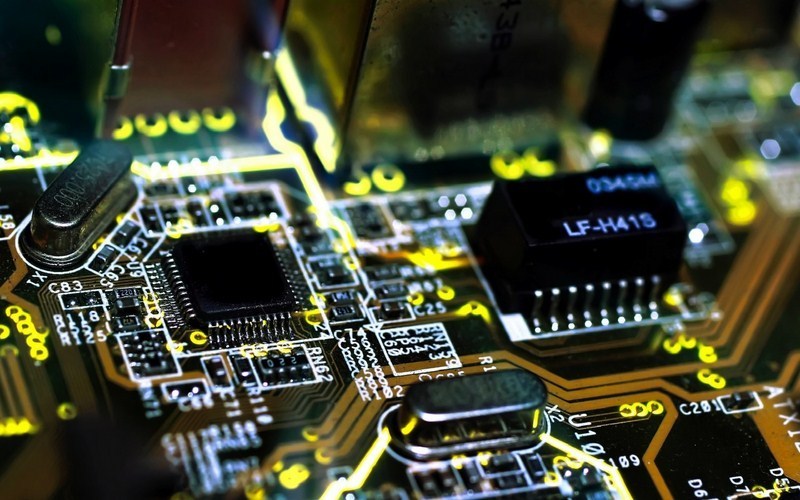
It is known as Hardware to the physical parts of a computer, including each of the internal components of the CPU. Or tower, keyboard, screen and even the mouse. It is often confused with “Software”, which are the programs, purely digital, that are installed and that are recorded both in the memory and on the hard disk.
The computer, therefore, consists of a microprocessor, or electronic brain, that receives instructions from the software. And outputs the information through different output devices, such as the monitor. Or the printer, or stores them in storage devices. According to these processes, we can classify the hardware into four different categories:
- Input devices
- Processing devices
- Output devices
- Storage devices
Input hardware:
Input devices are all those hardware components that are used to feed a stream of digital data that will be introduced into the computer for later processing. Among these devices, we can find:
Keyboard: To enter the writing
- Signaling devices: Like the mouse, touchpad, touch screen, graphic sensor of tablets. And even interactive keyboards or smart boards.
- Control devices for games: Joysticks, gamepads, steering wheels and other controls.
- Audio input devices: Microphone, which transmits the analog data and converts them into digital data, or Midi keyboards.
- Visual devices: webcam, digital cameras, digital camcorders, television capture cards, electronic microscopes, scanners. And bar code readers, among others.
Processing hardware:
They are components of the computer that receive the input data and the information in its raw state and process. And interpret it in order to achieve different activities.
There are not many variety of categories in terms of processing parts. The most common is the microprocessor. As the main hardware tool, which usually works in close collaboration with different memory devices.
The microprocessor in turn is divided into three different parts:
- The control unit: It manages and supervises the operations of the processor and other important components for the manipulation of information.
- The logical unit: That is responsible for arithmetic and logical operations, as well as addition, subtraction, multiplication. And division, and logical comparison operations that are used in different computer languages.
- The registry and the cache: That stores inside the processor the instructions of the control unit.
Output hardware:

The devices that display and disseminate the processed information are referred to as output hardware. And usually correspond to the final purpose of the requirements that are required of a computer.
The presentation of the output data is done according to the own senses of human persons, generally the sight. And the hearing, through the different output devices, such as:
- The monitor
- The projector screen
- Speaker
- Headphones
- Printer
- CD / DVD recorder
Storage hardware:
Storage devices are those parts of the computer that are used to store different types of data. The storage in turn is classified into two differentiated types. Depending on whether it is primary or secondary, depending on the volatility of the data or the duration over time.
In this way, the primary memory is that it is used together with the processor. Allowing the storage of the instructions of the control unit of the CPU for its later execution when they are required.
The secondary memory does not maintain close contact with the microprocessor. And stores the information without the need for electrical power. It is ROM, SRAM and DRACMA, whose storage can be magnetic, optical or flash. Such as hard drives, USB memories, DVDs, CDs, or even video tapes.
Components of a computer:
Once we know the classifications of the different types of hardware, we will see what are the most common components that we can find in a computer and its main characteristics:
- The processing unit (CPU): The speed and performance of our computer depend on this unit.
- RAM Memory: The greater the storage capacity of the RAM memory, the better the performance of the processor.
- The hard disk: It is used as a data warehouse. So the highest possible amount of GB is valued. 1 Terabyte is 1000 GB.
- Mouse and keyboard: Essential to indicate the positions of a web page, to enter text, and to select the elements in a fast way. There are many varieties, being the most common mice that have a USB cable and an optical reading. The keyboards, on the other hand, have hardly evolved.
- The monitor: With its own power cable, shows the information of the computer. Depending on the size and use, it is possible to acquire larger or smaller screens, with lower or higher resolution, and even touch devices.
- Optical unit: It is a CD or DVD player in which the laser light strikes the surface of the CD and a sensor measures the information and transforms it into digital data.
- Network adapter : Essential to connect to the Internet or other computers.
